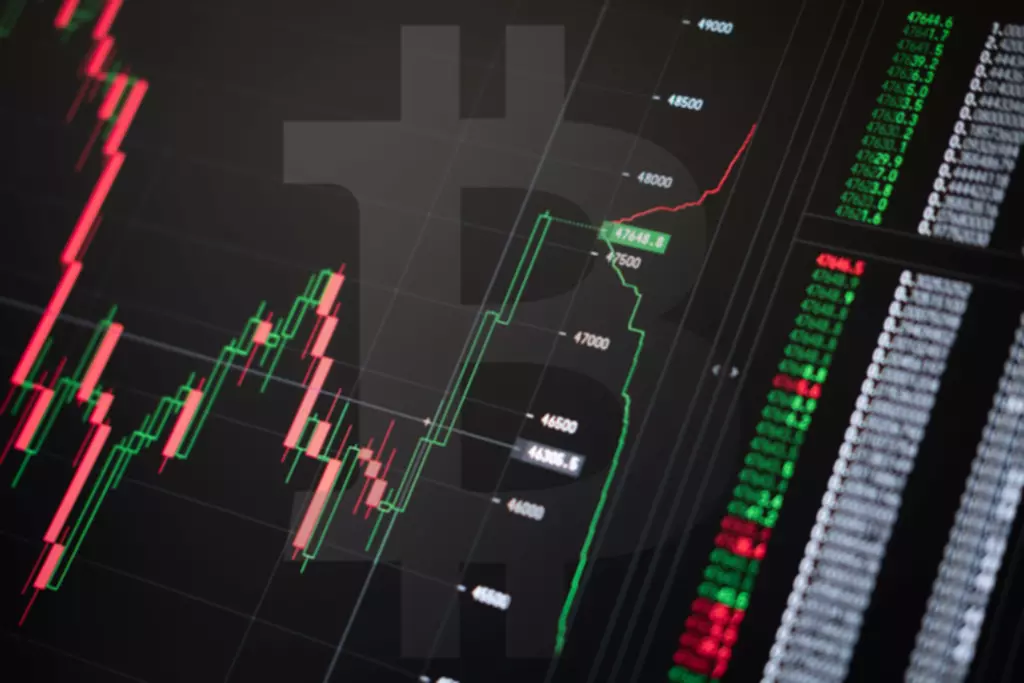Content
ABC Corp. has a beta coefficient of .78, which makes it slightly less volatile than the S&P 500 index. Divide the sum of the squared deviations (82.5) by the number of data values.
Options traders try to predict an asset’s future volatility, so the price of an option in the market reflects its implied volatility. While variance captures the dispersion of returns around the mean of an asset in general, volatility is a measure of that variance bounded by a specific period of time. Thus, we can report daily volatility, weekly, monthly, or annualized volatility. It is, therefore, useful to think of volatility as the annualized standard deviation. Finally, penny stocks and cryptocurrencies have proven to be highly volatile with huge swings in prices.
- When we talk about volatility, we’re really talking about how much the price of an investment is likely to fluctuate.
- This indicates that when sentiments are positive, investors actively participate in the market with the expectation of higher returns.
- Mushinada and Veluri used trading volume and return volatility for understanding the relationship between sentiments and returns.
- Investors should consider their investment objectives and risks carefully before investing.
- Market timing is the notion that an investor can pick just the right time to buy and sell a stock to make a profit or avoid a loss.
- If the market participants fail to earn a market risk premium for their expected volatility, they will move away from the market, which further causes volatility in the market.
- He has also held positions in private equity and fixed income asset management, trading, and investment banking with Macquarie Investments and Bank of America.
The development of behavioural finance theories triggered a discussion on the impact of investor sentiment on asset returns in the integrated stock market. The Granger causality test examines the direction of cause among different series . A time series xt Granger-causes another time series yt if series yt can be predicted with better accuracy by using the past values of xt rather than by not doing so. This study examined the causal relationship between the sentiment index and stock market return. Tests between the aggregate sentiment index and stock returns were modelled for understanding the leading and the lagging variables.
Volatility Is An Important Concept For Traders And Investors Alike
We will continue to build products that give more people—not fewer—access to our financial system. We’ll keep monitoring market conditions as we look to restore full trading for these securities. The conditional variance graph from the GARCH model shows the dynamics of market volatility of the Nifty returns (Fig.3).

One measure of the relative volatility of a particular stock to the market is its beta (β). A beta approximates the overall volatility of a security’s returns against the returns of a relevant benchmark (usually the S&P 500 is used). For example, a stock with a beta value of 1.1 has historically moved 110% for every 100% move in Crypto Volatility the benchmark, based on price level. Volatility is also used to price options contracts using models like Black-Scholes or binomial tree models. More volatile underlying assets will translate to higher options premiums because with volatility there is a greater probability that the options will end up in-the-money at expiration.
He is a graduate of the Executive Development Program at the Wharton School of the University of Pennsylvania. Bronchetti is a member of the CFA Society of Philadelphia, and holds his Series 7, Series 79 and Series 63 securities licenses. Robinhood Financial LLC is a member of SIPC, which protects securities customers of its members up to $500,000 (including $250,000 for claims for cash).
All investments involve risk and the past performance of a security, or financial product does not guarantee future results or returns. There is always the potential of losing money when you invest in securities, or other financial products. Investors should consider their investment objectives and risks carefully before investing. The trading volume is a key variable for constructing the sentiment index. Frequent trades in an active market increase the volume and create liquidity in the market. Therefore, researchers have used market turnover as a proxy for investor sentiment (Qiang and Shue-e 2009; Zhu 2012; Li 2014; Chuang et al. 2010).
Data And Variables
Proper examination of the market sentiment helps investors and fund managers decide their entry and exit points for investment. By taking the investor sentiment into account as a significant determinant of stock market volatility in asset price models, investors can enhance their portfolio performance. The results can also help policymakers’ efforts to stabilize stock market volatility and uncertainty in order to protect investors’ wealth and attract more investors. Therefore, future research should aim to develop investors’ sentiments from available high-frequency data by incorporating additional comprehensive investor sentiment factors to reflect real-time information.
For example, suppose you buy a stock for $100, which then decreases by 50% to $50. To return to its original value of $100, the stock price needs to increase by 100% to achieve a total return of 0%. According to AICPA research, nearly half of U.S. adults believe that a volatile market gives them an easy opportunity to make a profit.

Therefore, it can be theorised that during positive sentiment, companies explore the opportunity to enter the market through IPOs. Similarly, dividend declaration, bonus issue and a rights issue also trigger positive sentiments. Being a qualitative factor, it is not easy to quantify the market behaviour of investors. Some studies have relied on media reports, events and other publicly available documents to collect information on investor behaviour, and other studies have conducted surveys among investors for the same. Some other researchers have used market-based indicators such as price movements and trading activities for constructing sentiment indexes.
Measuring Stock Market Volatility
The results help to understand the role of non-fundamental factors in driving the Indian equity market away from a fundamentally oriented equilibrium and in influencing the risk-return perception. They also show that sentiment is relatively correlated with unexpected stock returns, and the correlation differs significantly over time. This contradicts with the traditional capital market theories and supports the behavioural theories on capital markets.
A Bollinger Band® is a momentum indicator used in technical analysis that depicts two standard deviations above and below a simple moving average. The Cboe Volatility Index, or VIX, is an index created by Cboe Global Markets, which shows the market’s expectation of 30-day volatility. You can also use hedging strategies to navigate volatility, such as buying protective puts to limit downside losses without having to sell any shares.
If your goal is long-term (i.e. investing for retirement), then being patient is likely your best course of action. Over the last 20 years, many of the market’s worst trading days have been within one month of the best trading days. Next in line are corporate stocks and bonds, which are always desirable but with the caveat that some corporations do better than others.
In the context of the Indian stock market, Sehgal et al. discussed the fundamental aspects of investor sentiment and its relationship with market performance. They identified several factors that might act as indicators of market behaviour and investor sentiments’ influence on market behaviour. They also suggested the development of a sentiment index based on these macroeconomic and market indicators. Using some of these indicators, Dash and Mahakud examined the explanatory power of an index of investor sentiment on aggregate returns.
Many investors consider “volatility” as synonymous with “risk.” In this view, risk is a necessary evil in order to receive the benefits of higher returns. It’s also not necessary to have a volatile portfolio in order to make an attractive return. Instead, by using a few basic principles, smart investors can enjoy the benefits of strong returns while significantly reducing their risk exposure. To help reduce overall volatility and improve chances to earn more consistent returns over time, keeping assets across several asset classes helps avoid the temptation to try and time the market.
Investors Sentiment And Stock Market Volatility
Volatility, as expressed as a percentage coefficient within option-pricing formulas, arises from daily trading activities. How volatility is measured will affect the value of the coefficient used. Jayson Bronchetti is executive vice president, chief investment officer , head of Risk & Sustainability at Lincoln Financial Group and president of Lincoln Investment Advisors Corporation.

They found a significant relationship between the investor sentiment index and stock returns across industries in the Indian stock market. Rahman and Shamsuddin studied the excess price ratio and its influence on investor sentiment and found that the price to earnings ratio increased with a rise in investors’ sentiment. Kumari and Mahakud and Chandra and Thenmozhi studied the impact of investor sentiment in the Indian capital market.
How To Keep Control During Market Volatility
Our customers have shown the world that investing is for everyone—not just institutional investors and hedge funds. Attempting to profit on stocks from short-term market movements is a gamble and more likely to detract from an investor’s long-term financial goals. Volatility profiles based on trailing-three-year calculations of the standard deviation of https://xcritical.com/ service investment returns. If majority of the portfolio is held in equity or stocks and the investor is not patient enough to buy and hold then volatility will have an impact on the strategy. For individual stocks, volatility is often encapsulated in a metric called beta. Beta measures a stock’s historical volatility relative to the S&P 500 index.
Volatility: Meaning In Finance And How It Works With Stocks
Up to May 2008, volatility was high, though it can be deemed as moderate when compared to that during the subprime crisis period. During this period, volatility increased exponentially, and this trend continued up to February 2010. First, the six orthogonal sentiment proxies and their first lags were used as factor loadings to calculate the raw sentiment index. The study started with estimating the initial principal component of the six indicators and their lags, which gave a first-stage index with 12 loading factors, namely the six proxies and their lags. Then, we calculated the correlation between the initial index and the current and lagged values of the indicators.
When markets become volatile, many people try to guess when stocks will bottom out. But many fail to see an upward trend in the market until after they have missed opportunities for gains. Investors should consider the investment objectives and unique risk profile of Exchange Traded Funds carefully before investing. ETFs are subject to risks similar to those of other diversified portfolios. So, what should investors do when markets plummet and volatility spikes?
While the reasoning may not make us feel better, it’s important for consumers to remain focused on the long-term and ensure they have a financial strategy in place to help navigate times like these. When we talk about volatility, we’re really talking about how much the price of an investment is likely to fluctuate. Volatility measures the degree of change in price over a period of time. High-volatility investments, like stocks, experience wide price swings in a very short period of time. In contrast, the price of low-volatility investments, like U.S. government bonds or farmland, remains relatively steady over time.
Blue-chip corporations historically perform well and yield a positive return, while small-cap, more growth-oriented corporations might have large returns with periods of high volatility. Historical volatility is a measure of how volatile an asset was in the past, while implied volatility is a metric that represents how volatile investors expect an asset to be in the future. Implied volatility can be calculated from the prices of put and call options.
The performance of most alternative investments is uncorrelated with the performance of public markets, meaning that they are unaffected by market shocks. Many alternative investments offer returns that are equal to or better than the stock market, and some offer other benefits such as passive income. Finally, any investor should invest in a level of market volatility that they are comfortable with. Financial advisors should provide options that match expected returns per unit of risk.
Volatility also matters for those who may need to sell their stocks soon, such as those close to retirement. But for long-term investors who tend to hold stocks for many years, the day-to-day movements of those stocks hardly matters at all. Volatility is just noise when you allow your investments to compound long into the future. Investors can find periods of high volatility to be distressing as prices can swing wildly or fall suddenly. Long-term investors are best advised to ignore periods of short-term volatility and stay the course. Meanwhile, emotions like fear and greed, which can become amplified in volatility markets, can undermine your long-term strategy.
The number itself isn’t terribly important, and the actual calculation of the VIX is quite complex. Stock market volatility is a measure of how much the stock market’s overall value fluctuates up and down. Beyond the market as a whole, individual stocks can be considered volatile as well. More specifically, you can calculate volatility by looking at how much an asset’s price varies from its average price. Standard deviation is the statistical measure commonly used to represent volatility.


There are 0 comments